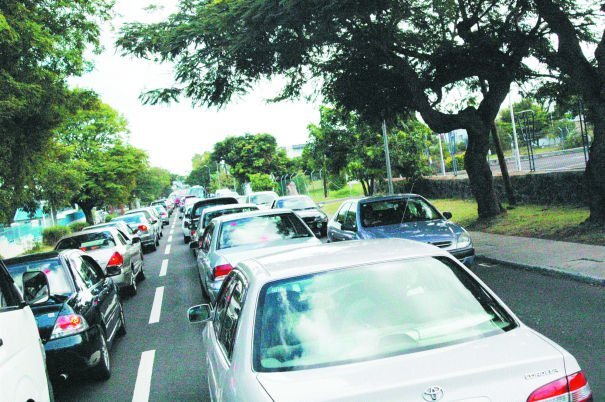Economic Growth: Automotive Industry Knows no Crisis

The latest official figures show that new car sales in 2012 show a 18% growth compared to 2011.
Our fleet is growing. December 31, 2012, there were 421,726 vehicles on our roads in all categories against 400,919 in 2011. Two-wheelers carve the lion's share at 173,308, representing 41% of the total number of vehicles.
Ten years ago, the national car fleet totaled 265,841. The year 2012 has seen an explosion in the sale of two-wheelers, mainly due to the abolition of customs duties on these devices. By cons, despite the economic crisis, the number of new cars sold increased from 7958 in 2011 to 9423 in 2012. Side of imported used vehicles, 5564 vehicles were sold in 2012 against 4295 in 2011.
An analysis of the figures reveals that in 2012 the number of vehicles (Dual Purpose vehicle) sold in 2012 is more or less the same as in 2011. One of the reasons hampering sales in this sector is the high amount of 'Road Tax' which is Rs 13,000 per year. For cons, the demand for new cars, to the detriment of imported used vehicles is explained by various reasons. According to economist Frankie Tang, the automotive market is now more dynamic than a decade ago. Client is flooded facilities financing a new car (credit, leasing, bank loans, among others) and has a wider range of vehicles, from different countries. There are no more big difference between the price of a new car and that of a used car imported.

In addition, the traditional Japanese brands are now facing competition from new brands Chinese, Korean or Malaysian offering the same comfort and value for money. The Economist also argues that, despite the crisis, there is a segment of the population who can still afford the luxury of a new car regularly.
On the other hand, owning a car is not a luxury but a necessity. Consulting firm Afribrains emphasizes that public transportation has not changed much over the past ten years. For example, in 2002 there were 2,450 buses on our roads. This figure only reached 2957 in 2012, despite increased development during this period. The number of vans carrying workers and students increases, as well as two-wheelers, as the less fortunate people do not want to suffer the vagaries of public transport.
NTA income
Who said increase in said vehicles as more revenue authorities in the form of taxes, duties or payment of various fees. According to the latest available figures (2011), the National Transport Authority collects about Rs 1.2 billion through the Road Tax and Rs 45 million in license fees (Taxi, Bus, ... Carrier License) Rs 63 million are collected by the audit centers (fitness) while the Registrar General collects nearly Rs 85 million in registration fees.
Vehicle fleet has required 151 million gallons of gasoline in 2011, imported at a cost of Rs 3.4 billion and 373 million liters of diesel at a cost of Rs 8.7 billion. In 2011, we also consumed 6,690 tons of lubricants, the value of import was Rs 520 million.
Road network
The car density, that is to say, the number of vehicles per kilometer of road is estimated at 190 vehicles per kilometer. Our road network includes a total of about 2 112 km distributed as follows: 82 km of highway, 1,035 km of main roads, 595 km of roads and 400 kilometers of road remaining. Note that these figures do not include new roads being built.
421,000 vehicles for 2000 kilometers of roads: our network is saturated? Not necessarily, according Afribrains. By comparison, the car density in Singapore is 280 or 956 704 vehicles for 3412 kilometers of roads, and yet come to Singapore to efficiently manage its fleet and traffic. For Afribrains, it is not the number of vehicles is important, but management.
Driving license
In 2011, the Mauritius Police granted
22,777 provisional license (Learner) and 12,818 new license.
Nouvelles connexes



